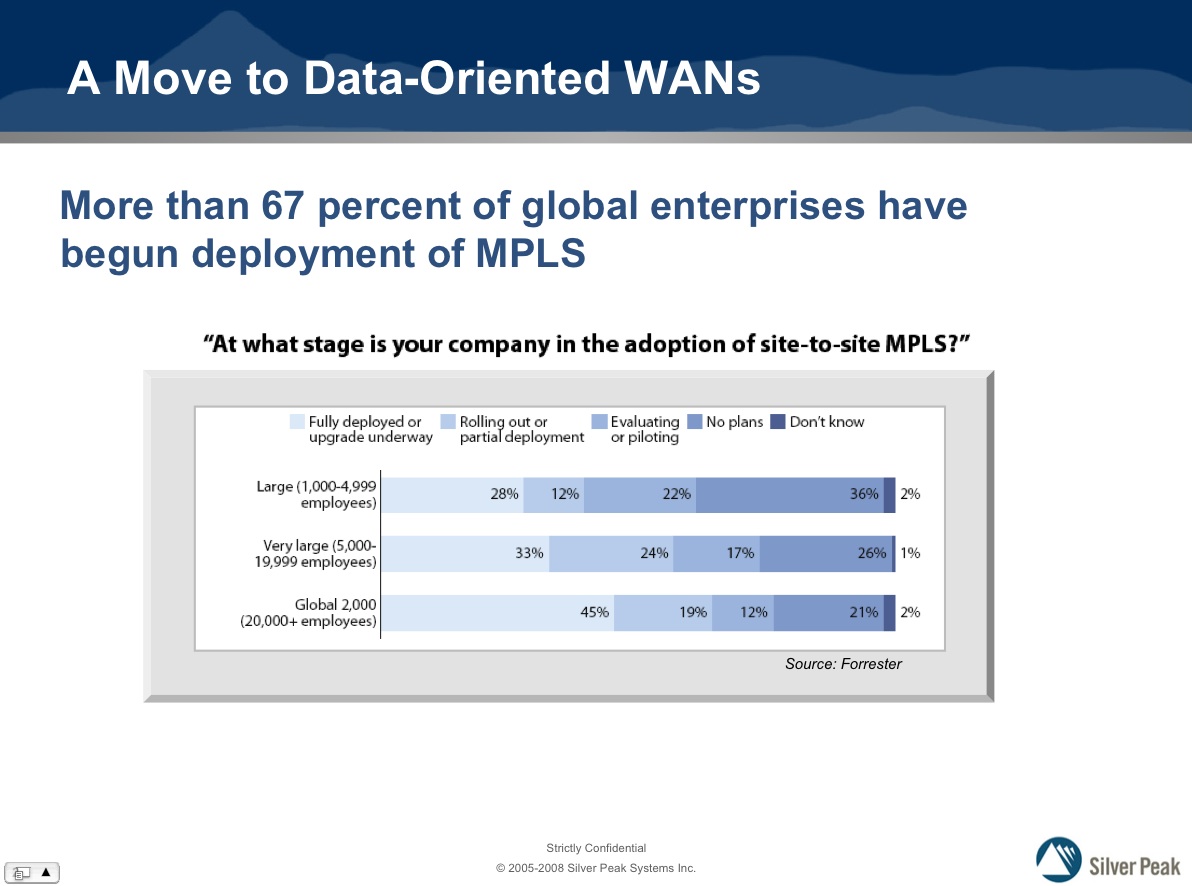Watching the WAN: Is it time to invest?

As companies start to tighten the belt and look for places around the office to save money (and hopefully increase efficiency). I wondered what else could be done for a company's tech backbone to keep the pencil-pushers from just hacking away. For some input, I tapped the folks at SilverPeak Systems, who have been schooling me lately in the understanding of WAN acceleration and optimization.
Whether it's linking offices on opposite sides of the world or opposite sides of the country, the wide area network has become more critical to business operations. Before, when companies were mostly running old school networks offered by the telcos, performance on the WAN wasn't a huge issue. Those offerings were the most reliable and data that travels over the network today - video, audio and even voice - weren't part of the business environment in the past. But times have changed.

Separately, there's the matter of bandwidth usage. A couple of months back, I posted an entry about Comcast's plans to impose an Internet usage cap on residential customers. At the time, I wondered how long it would take for Comcast and the others to start imposing usage caps on the enterprise. That hasn't happened (yet) but how many companies are prepared with information about actual usage and what that usage cost. SilverPeak tries to address the usage through deduplication.
Consider this example: a group of people around the globe are collaborating on a Powerpoint presentation. Just before they sign off on it, the employee in New York spots a typo in slide 27, makes the fix and sends it back to the others in London, Hong Kong and Singapore. But instead of sending yet another copy of the presentation over the network to each of those collaborators, deduplicaton programs recognize that this particular file has moved over the network before and has a footprint in the data centers overseas. So, instead of resending a 5 MB file to three others over the network, the email is 1 KB.
In theory, an investment to make the wide area network more efficient sounds like a good one. I posted an entry last month about how IT departments get the short end of the budgetary stick because so many resources go toward "keeping the lights on" instead of trying new technologies and services. To be proactive instead of reactive will be a tough sell, though, especially at a time when there will be pressure to trim, not spend more. Still, the smart company - like the smart Wall Street investor - will keep an eye on the long term. Anything can happen in 2, 3, 5 years. Those who lead the pack then could be the ones who make the investments now.